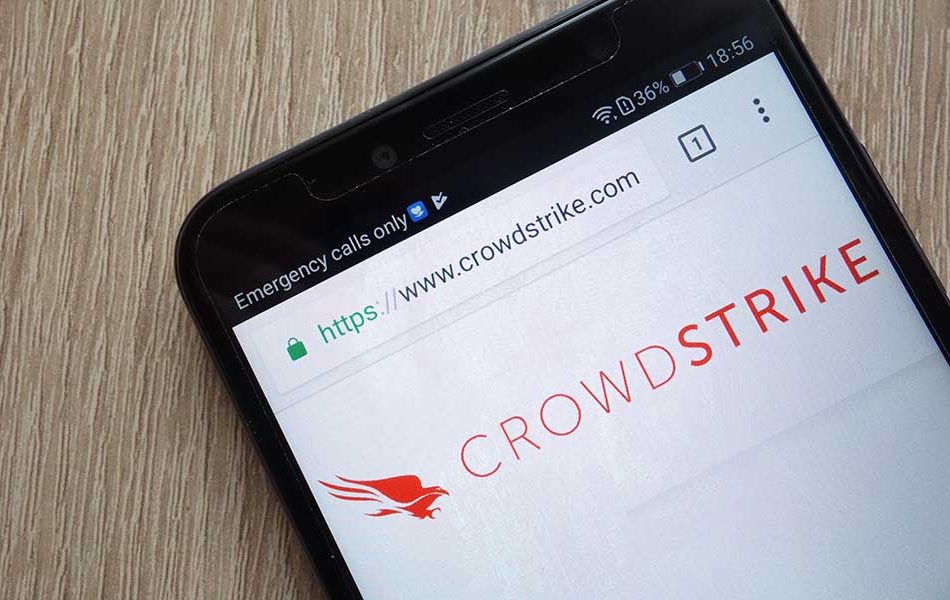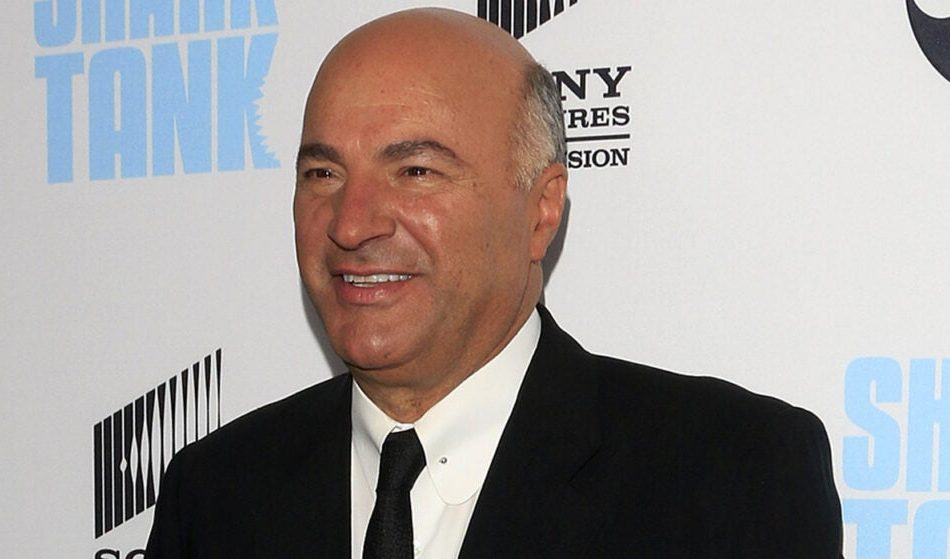Why Wall Street Is Hiking CrowdStrike Price Targets Ahead Of Earnings Report
Four Wall Street brokerages on Friday upped their price targets on CrowdStrike Holdings (CRWD) ahead of the cybersecurity firm’s third quarter earnings report on Nov. 26. CrowdStrike stock has gained 40% in 2024 as shares rebound from a global IT outage in July.
JPMorgan, KeyBanc Capital Markets, Jefferies and Baird hiked CrowdStrike stock price targets on Friday. RBC Capital, Truist, Barclay and Morgan Stanley upped their price targets earlier in the week.
↑
X
Small Caps Jump As Breadth Strengthens; Amphenol, DECK, FTI In Focus
CrowdStrike Stock: ARR Key Metric To Watch
“Results for Q3 could be much better than some anticipate,” said JPMorgan analyst Brian Essex, in a report. “This is the first full quarter following the July 19 outage. We expect we will see a material impact from the company’s sales pause following the outage, in addition to the impact of accommodations offered through CrowdStrike’s Customer Commitment Packages (CCP).”
He added: “We expect growth, margins, and cash flow will reflect the greatest pressure this quarter, with fundamentals improving the farther we move away from the date of the outage.”
The key financial metric for investors heading into the CrowdStrike earnings report will be subscription-based annual recurring revenue (ARR). Analysts polled by FactSet estimate ARR of $4.01 billion for Q3, up 27% from a year earlier and 4% from the June quarter.
“We believe CrowdStrike is capable of growing ARR in the mid-20s% over the medium term,” said KeyBanc Capital analyst Eric Heath in a report.
↑
X
How To Buy Stocks: IBD’s Four Pillars Of Investing
Amid the IT outage, analysts expected lower growth for “net new” ARR because of delays in signing contracts and expectations that many customers will seek price discounts when renewing contracts to help cover the cost of business disruptions.
CrowdStrike’s negotiations with customers over pricing concessions are expected to play out through 2025 and perhaps beyond.
Jefferies analyst Joseph Gallo said in a report: “The biggest question for CRWD this quarter is will investors even care about Q3/Q4 potential softness as long as the long-term ARR trajectory remains on course. We believe the next major catalyst for shares remains opening fiscal 2026 guidance, which will not be provided until March.”
He added: “For fiscal 2026, consensus ARR of $5.1B implies growth of 21% year-over-year versus 23% in fiscal 2025.”
On Friday, CrowdStrike stock rose 4% to close at 372.26.
$1 Billion In Quarterly Revenue In Sight
CrowdStrike earnings for the October quarter are expected to fall 1% to 81 cents with revenue rising 25% to $983 million. The company is on track to report over $1 billion in revenue for the first time in the January quarter.
When reporting July quarter financial results, CrowdStrike cut guidance due to the global IT outage, caused by a faulty software update. CrowdStrike’s software update required access to Microsoft’s operating system. The two companies have been cooperating to prevent future incidents.
Delta Air Lines (DAL), which took a one-time, 45-cent hit to September quarter earnings tied to the IT outage, has sued CrowdStrike seeking reimbursement for damages.
Further, CrowdStrike competes with Palo Alto Networks (PANW), SentinelOne (S), Microsoft (MSFT) and others in the “endpoint” market. Endpoint security tools detect malware on laptops, mobile phones and other devices that access corporate networks.
Also, CrowdStrike is building a broad, threat-detection cybersecurity platform called XDR, or extended detection and response. It monitors endpoints as well as web/email gateways, web application firewalls and cloud business workloads.
Meanwhile, CRWD stock is among cybersecurity stocks to watch.
Follow Reinhardt Krause on Twitter @reinhardtk_tech for updates on artificial intelligence, cybersecurity and cloud computing.
YOU MAY ALSO LIKE:
Learn The Best Trading Rules At Investor’s Corner
Want To Trade Options? Try Out These Strategies
Monitor IBD’s “Breaking Out Today” List For Companies Hitting New Buy Points
IBD Digital: Unlock IBD’s Premium Stock Lists, Tools And Analysis Today
Costs Have Escalated Drastically, Warns Kevin O'Leary, Hopeful Elon And Vivek Can 'Simplify Tax And Deregulate The Economy'
Kevin O’Leary is warning about how expensive running a business in America is becoming. In a recent Fox Business segment, O’Leary discussed how complicated rules and taxes are making it harder for companies across industries.
He also expressed hope that leaders like Elon Musk and Vivek Ramaswamy could bring about change by simplifying taxes and reducing unnecessary regulations.
Don’t Miss:
“If they just solved for simplifying tax and deregulated the economy, just say 30%, pulled some of that regulation out,” O’Leary said. According to O’Leary, the costs associated with staying compliant – like paying auditors, consultants and lawyers – are going up by about 20% yearly. “The cost that I have to spend each year just to remain compliant goes up at about 20% a year between all the consultants, the auditors, the lawyers and the changing rules of regulation,” he shared.
O’Leary explained that he operates across all 11 sectors of the economy and has never seen such an escalation in costs as he has in the last five years. He’s not alone either; many other business leaders share his concerns. He mentioned that if you spoke to the CEOs of the S&P 500 companies, they would tell you these regulatory costs are among the most rapidly growing expenses they face.
See Also: CD Popularity Soars: Over 50 Million Americans Embrace Safe Savings with 5–10% Annual Growth
“There’s lots of room for efficiency, lots of room for action on that,” O’Leary said. By pulling back on the red tape, businesses could save money and use it for other purposes, such as expanding their operations, hiring more staff or lowering consumer prices.
O’Leary hopes that by bringing in business-minded leadership – people like Elon Musk, who has already shown his ability to cut through inefficiencies at Twitter or Vivek Ramaswamy, known for his straightforward approach – the U.S. could reduce these burdens and give companies some much-needed breathing room.
However, not everyone is convinced that Musk and Ramaswamy are the right leaders for this challenge. Critics argue that while Musk’s methods at Twitter have been effective in certain areas, they have also been controversial and have led to disruptions. Some doubt whether his approach would translate well to government-level regulation involving a different scale and set of complexities.
Similarly, while appealing, Ramaswamy’s straightforward approach may lack the nuance required to navigate the intricacies of federal regulations. There are concerns that oversimplification could lead to unintended consequences, potentially creating more issues than solutions.
Read Next:
Image Via Shutterstock
Market News and Data brought to you by Benzinga APIs
© 2024 Benzinga.com. Benzinga does not provide investment advice. All rights reserved.
1,200 readers told us what they regret about investing for retirement
Millions of Americans facing retirement are worried they won’t be financially prepared — or fear that they’ll have to work forever.
Some are already there. Finances and retirement were major themes in the roughly 1,200 responses Business Insider received from Americans between the ages of 48 and 90 who filled out a voluntary survey about their biggest regrets. (This is part two of an ongoing series.)
Many of the respondents in the baby boomer generation said retirement — how to invest and how much one needs — is a black box. Some wish they’d hired a financial advisor, while others regretted expensive purchases. Others said they took Social Security too early or retired without a long-term financial plan.
And then there are those who suffered an unexpected setback such as a cancer diagnosis, a job loss, or a divorce and wish they’d been better prepared for an emergency.
Gary Lee Hayes, 70, wished he’d been more regimented with his savings and investments. The California resident briefly served in the Navy, got a degree in public administration, and worked in mental health and handyman positions. He had little financial literacy growing up and said he didn’t focus on building his career to be more lucrative.
Two of Hayes’ main money regrets are not investing in Verizon stock early on and not saving at least 10% of his income each month. He also said he was somewhat too liberal with his spending throughout his life, though he said he didn’t purchase anything too far beyond his means. He also avoided putting money into his 401(k) and said he should have chosen more stable investments instead of short-term ones.
“You can’t expect that you’re all of a sudden going to win the lottery,” said Hayes, who receives $1,846 a month in Social Security and lives in government-subsidized housing. “You can’t expect that someone’s going to pass and leave you an inheritance that will make your life more comfortable.”
A major theme among BI’s survey respondents was that they lacked knowledge about investing. For some, this meant not saving enough; for others, it meant falling into some common investing mistakes.
The Stock Market Is Soaring but These 2 Stocks Are Still Dirt Cheap Buys
Earlier this month, the S&P 500 hit a record high of more than 6,000 for the first time ever. Based on that, you might assume that stocks may be too expensive to buy right now as the average stock in the index is trading at more than 25 times earnings. However, there are still many deals out there.
Two stocks that could be among the best bargains right now include AbbVie (NYSE: ABBV) and Comcast (NASDAQ: CMCSA).
Are You Missing The Morning Scoop? Wake up with Breakfast news in your inbox every market day. Sign Up For Free »
Drugmaker AbbVie isn’t having a great year, but it’s not having a bad one, either. Its year-to-date gains totaled a modest 7% as of Monday’s close. That’s decent, but it’s nowhere near the S&P 500’s more impressive 23% rally.
For a while, the stock was outperforming the broad index. However, things went sideways for AbbVie recently after the company reported last week that its schizophrenia drug, emraclidine, failed to meet its primary endpoint in a phase 2 clinical trial. Emraclidine seems to have had the potential to be a blockbuster drug for AbbVie, and investors didn’t take the news lightly, dumping the stock afterward.
For a diverse business like AbbVie, that is by no means crippling to its operations or long-term outlook. In its most recent quarter, for the period ending Sept. 30, the company reported $14.5 billion in revenue, which grew by nearly 4% year over year — and that includes a 37% decline in Humira, which recently lost patent protection. AbbVie’s diverse business spans immunology, oncology, aesthetics, neuroscience, and eye care.
Yet, investors generally recognize that the company is no pushover. Abbvie has historically proven itself to be a growing business. While the pharmaceutical business is inherently risky, and failures will probably show up in Abbvie’s pipeline of drug therapies, that itself isn’t a reason to turn bearish on what’s still a top stock to buy and hold. Eventually, the risk-reward profile is too good to ignore.
AbbVie is facing a slowdown right now but the company expects that in 2025 it will “return to robust growth” and that through until the end of the decade, it will grow by high-single digits per year. And while Humira has lost patent protection, the company has effectively replaced that revenue with Skyrizi and Rinvoq, two immunology drugs which it believes will combine for higher peak revenue than its popular rheumatoid arthritis treatment.
For investors looking to play the long game, this sell-off can be an opportune time to buy AbbVie on weakness as it trades at a forward price-to-earnings (P/E) multiple of 14, which looks dirt cheap for such a great growth stock.
e.l.f. Beauty, Inc. Announcement: If You Have Suffered Losses in e.l.f. Beauty, Inc. (NYSE: ELF), You Are Encouraged to Contact The Rosen Law Firm About Your Rights
NEW YORK, Nov. 23, 2024 (GLOBE NEWSWIRE) —
WHY: Rosen Law Firm, a global investor rights law firm, announces an investigation of potential securities claims on behalf of shareholders of e.l.f. Beauty, Inc. ELF resulting from allegations that e.l.f. Beauty may have issued materially misleading business information to the investing public.
SO WHAT: If you purchased e.l.f. Beauty securities you may be entitled to compensation without payment of any out of pocket fees or costs through a contingency fee arrangement. The Rosen Law Firm is preparing a class action seeking recovery of investor losses.
WHAT TO DO NEXT: To join the prospective class action, go to https://rosenlegal.com/submit-form/?case_id=31380 or call Phillip Kim, Esq. toll-free at 866-767-3653 or email case@rosenlegal.com for information on the class action.
WHAT IS THIS ABOUT: On November 20, 2024, Muddy Waters Research issued a report in which it announced that it had a short position in e.l.f. Beauty, Inc. Muddy Waters stated that it believed that e.l.f. Beauty had “materially overstated revenue over the past three quarters,” and that it believed that in “Q2 FY24, ELF management realized its growth narrative was in trouble as its inventory built. It appears that ELF then began reporting inflated revenue and profits. Its reported inventory also appears materially inflated as a result – i.e., to account for cash that has not really come in.”
On this news, e.l.f. Beauty, Inc. stock fell as much as 15% in intraday trading on November 20, 2024.
WHY ROSEN LAW: We encourage investors to select qualified counsel with a track record of success in leadership roles. Often, firms issuing notices do not have comparable experience, resources, or any meaningful peer recognition. Many of these firms do not actually litigate securities class actions. Be wise in selecting counsel. The Rosen Law Firm represents investors throughout the globe, concentrating its practice in securities class actions and shareholder derivative litigation. Rosen Law Firm achieved the largest ever securities class action settlement against a Chinese Company at the time. Rosen Law Firm was Ranked No. 1 by ISS Securities Class Action Services for number of securities class action settlements in 2017. The firm has been ranked in the top 4 each year since 2013 and has recovered hundreds of millions of dollars for investors. In 2019 alone the firm secured over $438 million for investors. In 2020, founding partner Laurence Rosen was named by law360 as a Titan of Plaintiffs’ Bar. Many of the firm’s attorneys have been recognized by Lawdragon and Super Lawyers.
Follow us for updates on LinkedIn: https://www.linkedin.com/company/the-rosen-law-firm, on Twitter: https://twitter.com/rosen_firm or on Facebook: https://www.facebook.com/rosenlawfirm/.
Attorney Advertising. Prior results do not guarantee a similar outcome.
——————————-
Contact Information:
Laurence Rosen, Esq.
Phillip Kim, Esq.
The Rosen Law Firm, P.A.
275 Madison Avenue, 40th Floor
New York, NY 10016
Tel: (212) 686-1060
Toll Free: (866) 767-3653
Fax: (212) 202-3827
case@rosenlegal.com
www.rosenlegal.com

Market News and Data brought to you by Benzinga APIs
© 2024 Benzinga.com. Benzinga does not provide investment advice. All rights reserved.
Divorcing at 55 With $800K in My 401(k) – How Do I Protect My Finances?
SmartAsset and Yahoo Finance LLC may earn commission or revenue through links in the content below.
Like all family and property law, divorce is a highly state-specific process. How you will handle a divorce and protect your assets, and what constitutes individual vs. shared assets, will depend entirely on your jurisdiction. As a result, how retirement accounts are treated during divorce proceeds can vary widely from state to state.
The first step is typically to separate personal from marital assets. In most cases, you retain assets and debts that predated the marriage, and you split assets and debts that you acquired while you were married. This is far more complicated than it sounds, as it’s very easy for assets to comingle and share accrued value during the course of a marriage.
For example, say that you are 55 years old with $800,000 in a 401(k). The most important part of this will be where you live and how much of the account was earned during the marriage. From there, a divorce court will typically divide up the 401(k) based on your household’s overall assets and, in particular, any other retirement accounts held by you or your spouse.
While a complete discussion of this issue is far beyond the scope of a single article, we’ll explore some of the most important factors to consider below.
If you need financial advice during or after a divorce, consider connecting with a fiduciary financial advisor today.
Divorce courts typically do not give special status to a couple’s tax-advantaged retirement accounts. A judge will treat these portfolios as a standard financial asset, splitting up each account based on the overall distribution of assets, the parties’ relative financial status and an account’s marital vs. personal status, among other factors.
There is no tax penalty for taking early withdrawals in order to transfer retirement assets between divorcing spouses. This is typically done through a “Qualified Domestic Relations Order” or a “Transfer Incident to Divorce” depending on the nature of the account.
You can move these funds directly into another qualifying pre-tax account without triggering income taxes or an early withdrawal penalty.
For example, say that you have $800,000 in a 401(k), of which you had $300,000 in the account when you got married. Typically, you will keep that $300,000. The remaining $500,000 might be considered a marital asset and be distributed between you and your spouse. You might then agree to split that money 50/50, and draft a QDRO to remove $250,000 worth of assets from your 401(k) and move them to an account of your spouse’s choosing.
This Dividend King Is on Track to Join the $1 Trillion Club. Is It a Buy?
There are currently eight publicly traded companies with market caps of $1 trillion or more: Nvidia, Apple, Microsoft, Alphabet, Amazon, Meta Platforms, Tesla, and Berkshire Hathaway.
Those stocks are highly renowned, and for good reason: They have made plenty of investors wealthy. However, none of them are particularly known as dividend stocks, and thus far the trillion-dollar club has excluded longtime dividend payers. However, that could soon change.
Start Your Mornings Smarter! Wake up with Breakfast news in your inbox every market day. Sign Up For Free »
Walmart (NYSE: WMT), the world’s biggest retailer and the largest company in the world by revenue, has quietly blown away the rest of the retail sector in recent years as its commitment to omnichannel sales and reputation for everyday low prices have delivered steady growth. Meanwhile, many of its peers have struggled with inflation and weak consumer spending.
Walmart reported another round of strong quarterly results on Tuesday morning. Top-line growth was strong across the board with comparable-store sales (comps) up 5.3% at U.S. stores (excluding fuel), its best performance in at least five quarters. And Sam’s Club, its members-only warehouse retail chain, reported 7% comps growth excluding fuel.
At its international segment, which has historically been a challenging segment for the company, constant-currency revenue rose 12.4% to $30.3 billion. Overall, revenue was up 5.5% to $169.6 billion, which topped the consensus at $166.6 billion.
The retailer also delivered solid margin improvement, with gross margin increasing 21 basis points to 24.2%, driven by lower markdowns in U.S. stores and strong inventory management. Overall operating margin expanded as well, as operating income was up 8.2% to $6.7 billion. Adjusted earnings per share (EPS) rose from $0.51 to $0.58, ahead of the consensus at $0.53.
Walmart’s stores performed well, but it’s also benefiting from emerging growth businesses like advertising, where revenue jumped 28%, and global e-commerce remains strong with sales up 27% as it gains market share on Amazon and other competitors.
The company also raised its guidance, showing increased confidence in the holiday quarter. It now expects net sales to rise 4.8% to 5.1% and full-year adjusted EPS of $2.42 to $2.47.
Walmart’s market cap topped $700 billion for the first time on Tuesday, Nov. 19, meaning the company is approaching a $1 trillion market cap. At its current valuation, the stock would only have to grow by 43%, which seems achievable given its recent momentum. The stock is now up 66% year to date, though it will be difficult to repeat that performance next year.
ROSEN, A TOP-RANKED LAW FIRM, Encourages Xiao-I Corporation Investors to Secure Counsel Before Important Deadline in Securities Class Action – AIXI
NEW YORK, Nov. 23, 2024 (GLOBE NEWSWIRE) —
WHY: Rosen Law Firm, a global investor rights law firm, reminds purchasers of Xiao-I Corporation AIXI: (i) American depository shares (“ADSs”) pursuant and/or traceable to the Offering Documents issued in connection with the Company’s initial public offering conducted on or about March 9, 2023 (the “IPO” or “Offering”); and/or (ii) securities between March 9, 2023 and July 12, 2024, both dates inclusive (the “Class Period”), of the important December 16, 2024 lead plaintiff deadline.
SO WHAT: If you purchased Xiao-I ADSs pursuant and/or traceable to the IPO and/or securities during the Class Period you may be entitled to compensation without payment of any out of pocket fees or costs through a contingency fee arrangement.
WHAT TO DO NEXT: To join the Xiao-I class action, go to https://rosenlegal.com/submit-form/?case_id=25023 or call Phillip Kim, Esq. toll-free at 866-767-3653 or email case@rosenlegal.com for information on the class action. A class action lawsuit has already been filed. If you wish to serve as lead plaintiff, you must move the Court no later than December 16, 2024. A lead plaintiff is a representative party acting on behalf of other class members in directing the litigation.
WHY ROSEN LAW: We encourage investors to select qualified counsel with a track record of success in leadership roles. Often, firms issuing notices do not have comparable experience, resources, or any meaningful peer recognition. Many of these firms do not actually litigate securities class actions, but are merely middlemen that refer clients or partner with law firms that actually litigate the cases. Be wise in selecting counsel. The Rosen Law Firm represents investors throughout the globe, concentrating its practice in securities class actions and shareholder derivative litigation. Rosen Law Firm achieved the largest ever securities class action settlement against a Chinese Company at the time. Rosen Law Firm was Ranked No. 1 by ISS Securities Class Action Services for number of securities class action settlements in 2017. The firm has been ranked in the top 4 each year since 2013 and has recovered hundreds of millions of dollars for investors. In 2019 alone the firm secured over $438 million for investors. In 2020, founding partner Laurence Rosen was named by law360 as a Titan of Plaintiffs’ Bar. Many of the firm’s attorneys have been recognized by Lawdragon and Super Lawyers.
DETAILS OF THE CASE: According to the lawsuit, the Offering Documents and defendants made false and/or misleading statements and/or failed to disclose that: (1) defendants had downplayed the true scope and severity of risks that Xiao-I faced due to certain of its Chinese shareholders’ non-compliance with Circular 37 Registration, which imposes certain registration requirements on Chinese residents that contribute domestic assets or interests to offshore companies, including Xiao-I’s inability to use Offering proceeds for intended business purposes; (2) Xiao-I failed to comply with the U.S.’s Generally Accepted Accounting Principles (“GAAP”) in preparing its financial statements; (3) defendants overstated Xiao-I’s efforts to remediate material weaknesses in Xiao-I’s financial controls; (4) Xiao-I was forced to incur significant research and development (“R&D”) expenses to effectively compete in the AI industry; (5) Xiao-I downplayed the significant negative impact that such expenses would have on Xiao-I’s business and financial results; (6) accordingly, Xiao-I overstated its AI capabilities, R&D resources, and overall ability to compete in the AI market; (7) as a result of all the foregoing, there was a substantial likelihood that Xiao-I would fail to comply with NASDAQ’s listing requirements, including, inter alia, that its ADSs maintain a minimum closing bid price of $1.00 per share, (the “Minimum Bid Price Requirement”); and (8) as a result, the Offering Documents and defendants’ public statements throughout the Class Period were materially false and/or misleading and failed to state information required to be stated therein. When the true details entered the market, the lawsuit claims that investors suffered damages.
To join the Xiao-I class action, go to https://rosenlegal.com/submit-form/?case_id=25023 or call Phillip Kim, Esq. toll-free at 866-767-3653 or email case@rosenlegal.com for information on the class action.
No Class Has Been Certified. Until a class is certified, you are not represented by counsel unless you retain one. You may select counsel of your choice. You may also remain an absent class member and do nothing at this point. An investor’s ability to share in any potential future recovery is not dependent upon serving as lead plaintiff.
Follow us for updates on LinkedIn: https://www.linkedin.com/company/the-rosen-law-firm, on Twitter: https://twitter.com/rosen_firm or on Facebook: https://www.facebook.com/rosenlawfirm/.
Attorney Advertising. Prior results do not guarantee a similar outcome.
Contact Information:
Laurence Rosen, Esq.
Phillip Kim, Esq.
The Rosen Law Firm, P.A.
275 Madison Avenue, 40th Floor
New York, NY 10016
Tel: (212) 686-1060
Toll Free: (866) 767-3653
Fax: (212) 202-3827
case@rosenlegal.com
www.rosenlegal.com

Market News and Data brought to you by Benzinga APIs
© 2024 Benzinga.com. Benzinga does not provide investment advice. All rights reserved.
The Top S&P 500 Stock of 2024 (So Far) Isn't Nvidia. Here's Where History Says the Soaring Stock Is Headed in 2025.
On Nov. 20, Nvidia reported financial results for its fiscal 2025 third quarter, showing stunning 94% year-over-year revenue growth. The business is absolutely booming, and so is the stock price. As of this writing, Nvidia stock is up close to 200% year to date.
As impressive as those returns are for Nvidia, it’s not the best-performing stock in the S&P 500 (SNPINDEX: ^GSPC) this year. That distinction presently belongs to energy company Vistra (NYSE: VST), which has gained 332% in 2024.
Start Your Mornings Smarter! Wake up with Breakfast news in your inbox every market day. Sign Up For Free »
Vistra provides residential electricity and owns power generation plants, including nuclear plants. And many investors believe that its nuclear assets set it up to meet the growing power needs of artificial intelligence (AI).
However, after gaining over 300% in under a year, is it too late to buy Vistra stock? Stock market history can serve as a guide.
Looking at top stocks from the past can offer some useful insights. For practical reasons, I had to limit the scope of this survey by setting some parameters.
First, I’m only looking at the last 10 years for the S&P 500. Second, I’ve only included stocks that were members of the S&P 500 for the entire year. Companies included in the index during the year were excluded from the results.
Over the last 10 years, Southwest Airlines, Netflix, Nvidia, Align Technology, AMD, Devon Energy, and Occidental Petroleum have all taken the top-stock crown at least once.
|
Year |
Best-Performing Stock |
Return When It Was the Top Stock |
Return the Following Year |
|---|---|---|---|
|
2014 |
Southwest Airlines |
125% |
2% |
|
2015 |
Netflix |
134% |
8% |
|
2016 |
Nvidia |
224% |
81% |
|
2017 |
Align Technology |
131% |
(6%) |
|
2018 |
AMD |
80% |
148% |
|
2019 |
AMD |
148% |
100% |
|
2020 |
Nvidia |
122% |
125% |
|
2021 |
Devon Energy |
179% |
40% |
|
2022 |
Occidental Petroleum |
117% |
(5%) |
|
2023 |
Nvidia |
239% |
196%* |
Return data from YCharts. Table by author. *Year-to-date return as of 11/21/24.
This data is actually quite surprising. After being the index’s top stock, one would think it would be due for a pullback. But in reality, the past decade’s annual best performers continued their winning streak the next year in eight out of 10 cases.
Moreover, the average gain in the second year was huge. Investors could have made a lot of money by simply buying whichever was the best stock in the past year.
Let’s say an investor bought Southwest Airlines stock on Dec. 31, 2014 and held for all of 2015. And let’s say that this investor sold Southwest Airlines at the end of 2015 and rolled that investment into Netflix for 2016, then did the same for Nvidia in 2017, and so on.
7 Examples of Financial Advisor Branding Statements
Cultivating a personal brand can help advisors stand out in a competitive landscape. The most successful businesses understand the value of a highly recognizable, trusted brand image for attracting new clients. An impactful financial advisor branding statement can help you clearly convey what your business stands for and the value you offer to prospective clients.
Do you need help expanding the marketing of your financial advisor practice? Try SmartAsset AMP, a holistic client prospecting and marketing automation platform.
A branding statement is a concise statement that neatly encapsulates who you are, what you do and what makes your business unique. A well-crafted branding statement conveys your firm’s mission, values and key selling points.
Financial advisors may develop a branding statement that represents their firm as a whole. They could also write a separate personal branding statement for themselves.
Your firm’s branding statement communicates what your business does and how you meet your clients’ needs. A personal brand statement is an opportunity to demonstrate your personality and what you’re most passionate about when it comes to helping clients.
Financial services is a highly competitive industry. If you want to succeed, you have to give prospective clients clear reasons to choose your business over another advisor’s. A branding statement helps you to crystallize your messaging for maximum impact.
Developing a brand statement allows you to:
-
Emphasize your expertise to your target audience
-
Put your skills and unique value proposition in the spotlight
-
Demonstrate the value you offer to your clients
The best brand statements for advisors are memorable or “sticky,” meaning their message lingers with prospective clients. Stickiness is an important characteristic in building your advisor brand, as prospects who remember you may be more likely to seek out your services.
It’s important to remember that a brand statement is different from a slogan or tagline. Brand statements are concise, but still detailed. Meanwhile a slogan or tagline is usually a catchy phrase that’s designed to grab attention.
SmartAsset and Yahoo Finance LLC may earn commission or revenue through links in the content below.
A branding statement is typically brief, no more than one to three sentences. So it’s important to choose your words carefully. Having some examples of financial advisor branding statements to follow can help you decide what to include:










